Operating System Concepts 9th Edition by Abraham Silberschatz, ISBN-13: 978-1118063330
[PDF eBook eTextbook]
- Publisher: Wiley; 9th edition (December 17, 2012)
- Language: English
- 976 pages
- ISBN-10: 1118063333
- ISBN-13: 978-1118063330
STAY CURRENT WITH THE EVER-CHANGING FIELD OF OPERATING SYSTEMS!
This new Ninth Edition of Silberschatz, Galvin, and Gagne’s Operating System Concepts introduces the fundamental concepts of the field as well as cutting edge developments to give students a broad understanding of the fast-developing world of operating systems.
Changes in the new edition were guided by recent growth in three key areas that have affected operating systems: multicore systems, mobile computing, and virtualization. Relevant coverage of these topics has been integrated throughout this new edition, or in the case of virtualization, comprises an entirely new chapter. Additionally, nearly every chapter has been updated with new material and older material has been removed.
New to this edition:
- Substantive organizational changes including:
– Real-time systems integrated as appropriate throughout the text instead of concentrated in a single chapter.
– Re-ordered chapters on storage management.
– Presentation of process synchronization now appears before process scheduling.
- New Chapter 16, Virtual Machines, provides an overview of virtualization and how it relates to contemporary operating systems.
- New Chapter 17, Distributed Systems, combines a selection of materials from previous Chapters 16, 17, and 18.
- The Linux Systems chapter has been updated to cover the Linux Kernel version 3.0
- A new Linux virtual machine including Linux source code is provided on the supporting web site. This virtual machine also includes a development environment with compilers and editors. Most of the programming assignments can be completed using this virtual machine.
- Over 60 new written exercises and over 20 new programming problems and projects, most involving processes, threads, process synchronization, and memory management. Some involve adding kernel modules to the Linux system.
The Ninth Edition of this respected text continues to present students with real-world operating systems to illustrate fundamental operating concepts. Students are able to bridge the gap between concepts and actual implementations by learning a solid theoretical foundation of operating systems.
Table of Contents:
Machine generated contents note: pt. ONE OVERVIEW — ch. 1 Introduction — 1.1.What Operating Systems Do — 1.2.Computer-System Organization — 1.3.Computer-System Architecture — 1.4.Operating-System Structure — 1.5.Operating-System Operations — 1.6.Process Management — 1.7.Memory Management — 1.8.Storage Management — 1.9.Protection and Security — 1.10.Kernel Data Structures — 1.11.Computing Environments — 1.12.Open-Source Operating Systems — 1.13.Summary — Exercises — Bibliographical Notes — ch. 2 Operating-System Structures — 2.1.Operating-System Services — 2.2.User and Operating-System Interface — 2.3.System Calls — 2.4.Types of System Calls — 2.5.System Programs — 2.6.Operating-System Design and Implementation — 2.7.Operating-System Structure — 2.8.Operating-System Debugging — 2.9.Operating-System Generation — 2.10.System Boot — 2.11.Summary — Exercises — Bibliographical Notes — pt. TWO PROCESS MANAGEMENT — ch. 3 Processes — 3.1.Process Concept — 3.2.Process Scheduling — 3.3.Operations on Processes — 3.4.Interprocess Communication — 3.5.Examples of IPC Systems — 3.6.Communication in Client-Server Systems — 3.7.Summary — Exercises — Bibliographical Notes — ch. 4 Threads — 4.1.Overview — 4.2.Multicore Programming — 4.3.Multithreading Models — 4.4.Thread Libraries — 4.5.Implicit Threading — 4.6.Threading Issues — 4.7.Operating-System Examples — 4.8.Summary — Exercises — Bibliographical Notes — ch. 5 Process Synchronization — 5.1.Background — 5.2.The Critical-Section Problem — 5.3.Peterson’s Solution — 5.4.Synchronization Hardware — 5.5.Mutex Locks — 5.6.Semaphores — 5.7.Classic Problems of Synchronization — 5.8.Monitors — 5.9.Synchronization Examples — 5.10.Alternative Approaches — 5.11.Summary — Exercises — Bibliographical Notes — ch. 6 CPU Scheduling — 6.1.Basic Concepts — 6.2.Scheduling Criteria — 6.3.Scheduling Algorithms — 6.4.Thread Scheduling — 6.5.Multiple-Processor Scheduling — 6.6.Real-Time CPU Scheduling — 6.7.Operating-System Examples — 6.8.Algorithm Evaluation — 6.9.Summary — Exercises — Bibliographical Notes — ch. 7 Deadlocks — 7.1.System Model — 7.2.Deadlock Characterization — 7.3.Methods for Handling Deadlocks — 7.4.Deadlock Prevention — 7.5.Deadlock Avoidance — 7.6.Deadlock Detection — 7.7.Recovery from Deadlock — 7.8.Summary — Exercises — Bibliographical Notes — pt. THREE MEMORY MANAGEMENT — ch. 8 Main Memory — 8.1.Background — 8.2.Swapping — 8.3.Contiguous Memory Allocation — 8.4.Segmentation — 8.5.Paging — 8.6.Structure of the Page Table — 8.7.Example: Intel 32 and 64-bit Architectures — 8.8.Example: ARM Architecture — 8.9.Summary — Exercises — Bibliographical Notes — ch. 9 Virtual Memory — 9.1.Background — 9.2.Demand Paging — 9.3.Copy-on-Write — 9.4.Page Replacement — 9.5.Allocation of Frames — 9.6.Thrashing — 9.7.Memory-Mapped Files — 9.8.Allocating Kernel Memory — 9.9.Other Considerations — 9.10.Operating-System Examples — 9.11.Summary — Exercises — Bibliographical Notes — pt. FOUR STORAGE MANAGEMENT — ch. 10 Mass-Storage Structure — 10.1.Overview of Mass-Storage Structure — 10.2.Disk Structure — 10.3.Disk Attachment — 10.4.Disk Scheduling — 10.5.Disk Management — 10.6.Swap-Space Management — 10.7.RAID Structure — 10.8.Stable-Storage Implementation — 10.9.Summary — Exercises — Bibliographical Notes — ch. 11 File-System Interface — 11.1.File Concept — 11.2.Access Methods — 11.3.Directory and Disk Structure — 11.4.File-System Mounting — 11.5.File Sharing — 11.6.Protection — 11.7.Summary — Exercises — Bibliographical Notes — ch. 12 File-System Implementation — 12.1.File-System Structure — 12.2.File-System Implementation — 12.3.Directory Implementation — 12.4.Allocation Methods — 12.5.Free-Space Management — 12.6.Efficiency and Performance — 12.7.Recovery — 12.8.NFS — 12.9.Example: The WAFL File System — 12.10.Summary — Exercises — Bibliographical Notes — ch. 13 I/O Systems — 13.1.Overview — 13.2.I/O Hardware — 13.3.Application I/O Interface — 13.4.Kernel I/O Subsystem — 13.5.Transforrming I/O Requests to Hardware Operations — 13.6.STREAMS — 13.7.Performance — 13.8.Summary — Exercises — Bibliographical Notes — pt. FIVE PROTECTION AND SECURITY — ch. 14 Protection — 14.1.Goals of Protection — 14.2.Principles of Protection — 14.3.Domain of Protection — 14.4.Access Matrix — 14.5.Implementation of the Access Matrix — 14.6.Access Control — 14.7.Revocation of Access Rights — 14.8.Capability-Based Systems — 14.9.Language-Based Protection — 14.10.Summary — Exercises — Bibliographical Notes — ch. 15 Security — 15.1.The Security Problem — 15.2.Program Threats — 15.3.System and Network Threats — 15.4.Cryptography as a Security Tool — 15.5.User Authentication — 15.6.Implementing Security Defenses — 15.7.Firewalling to Protect Systems and Networks — 15.8.Computer-Security Classifications — 15.9.An Example: Windows 7 — 15.10.Summary — Exercises — Bibliographical Notes — pt. SIX ADVANCED TOPICS — ch. 16 Virtual Machines — 16.1.Overview — 16.2.History — 16.3.Benefits and Features — 16.4.Building Blocks — 16.5.Types of Virtual Machines and Their Implementations — 16.6.Virtualization and Operating-System Components — 16.7.Examples — 16.8.Summary — Exercises — Bibliographical Notes — ch. 17 Distributed Systems — 17.1.Advantages of Distributed Systems — 17.2.Types of Network-based Operating Systems — 17.3.Network Structure — 17.4.Communication Structure — 17.5.Communication Protocols — 17.6.An Example: TCP/IP — 17.7.Robustness — 17.8.Design Issues — 17.9.Distributed File Systems — 17.10.Summary — Exercises — Bibliographical Notes — pt. SEVEN CASE STUDIES — ch. 18 The Linux System — 18.1.Linux History — 18.2.Design Principles — 18.3.Kernel Modules — 18.4.Process Management — 18.5.Scheduling — 18.6.Memory Management — 18.7.File Systems — 18.8.Input and Output — 18.9.Interprocess Communication — 18.10.Network Structure — 18.11.Security — 18.12.Summary — Exercises — Bibliographical Notes — ch. 19 Windows 7 — 19.1.History — 19.2.Design Principles — 19.3.System Components — 19.4.Terminal Services and Fast User Switching — 19.5.File System — 19.6.Networking — 19.7.Programmer Interface — 19.8.Summary — Exercises — Bibliographical Notes — ch. 20 Influential Operating Systems — 20.1.Feature Migration — 20.2.Early Systems — 20.3.Atlas — 20.4.XDS-940 — 20.5.THE — 20.6.RC 4000 — 20.7.CTSS — 20.8.MULTICS — 20.9.IBM OS/360 — 20.10.TOPS-20 — 20.11.CP/M and MS/DOS — 20.12.Macintosh Operating System and Windows — 20.13.Mach — 20.14.Other Systems — Exercises — Bibliographical Notes — pt. EIGHT APPENDICES — Appendix A BSD UNIX — A.1.UNIX History — A.2.Design Principles — A.3.Programmer Interface — A.4.User Interface — A.5.Process Management — A.6.Memory Management — A.7.File System — A.8.I/O System — A.9.Interprocess Communication — A.10.Summary — Exercises — Bibliographical Notes — Appendix B The Mach System — B.1.History of the Mach System — B.2.Design Principles — B.3.System Components — B.4.Process Management — B.5.Interprocess Communication — B.6.Memory Management — B.7.Programmer Interface — B.8.Summary — Exercises
What makes us different?
• Instant Download
• Always Competitive Pricing
• 100% Privacy
• FREE Sample Available
• 24-7 LIVE Customer Support

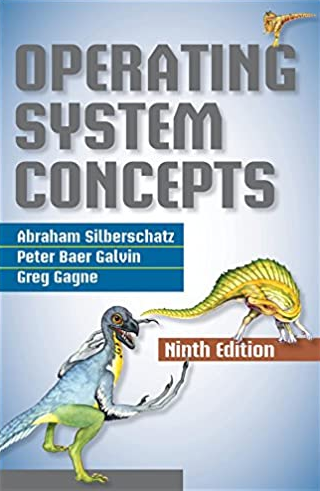
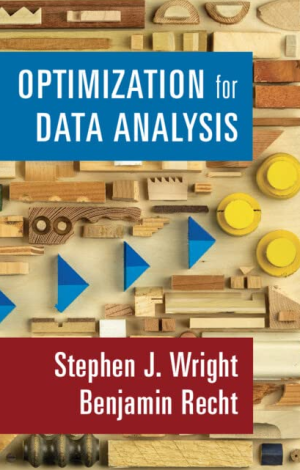
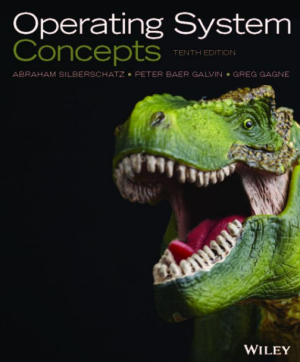
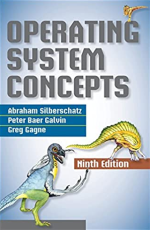
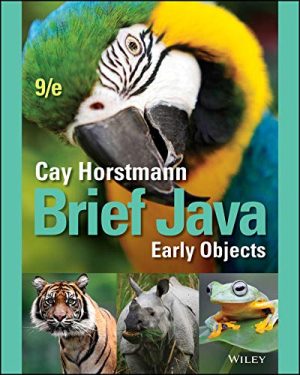
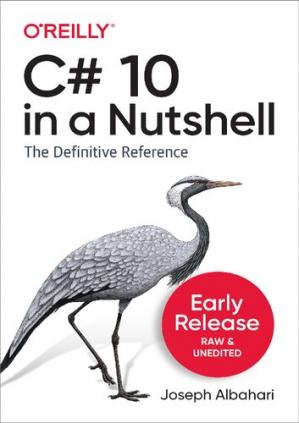
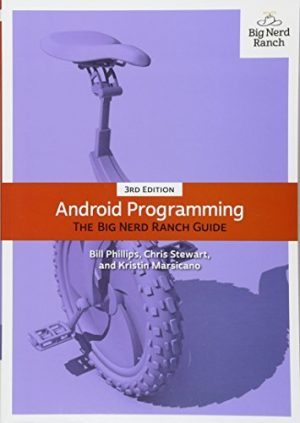
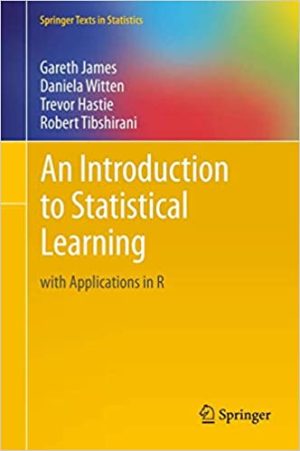
Reviews
There are no reviews yet.